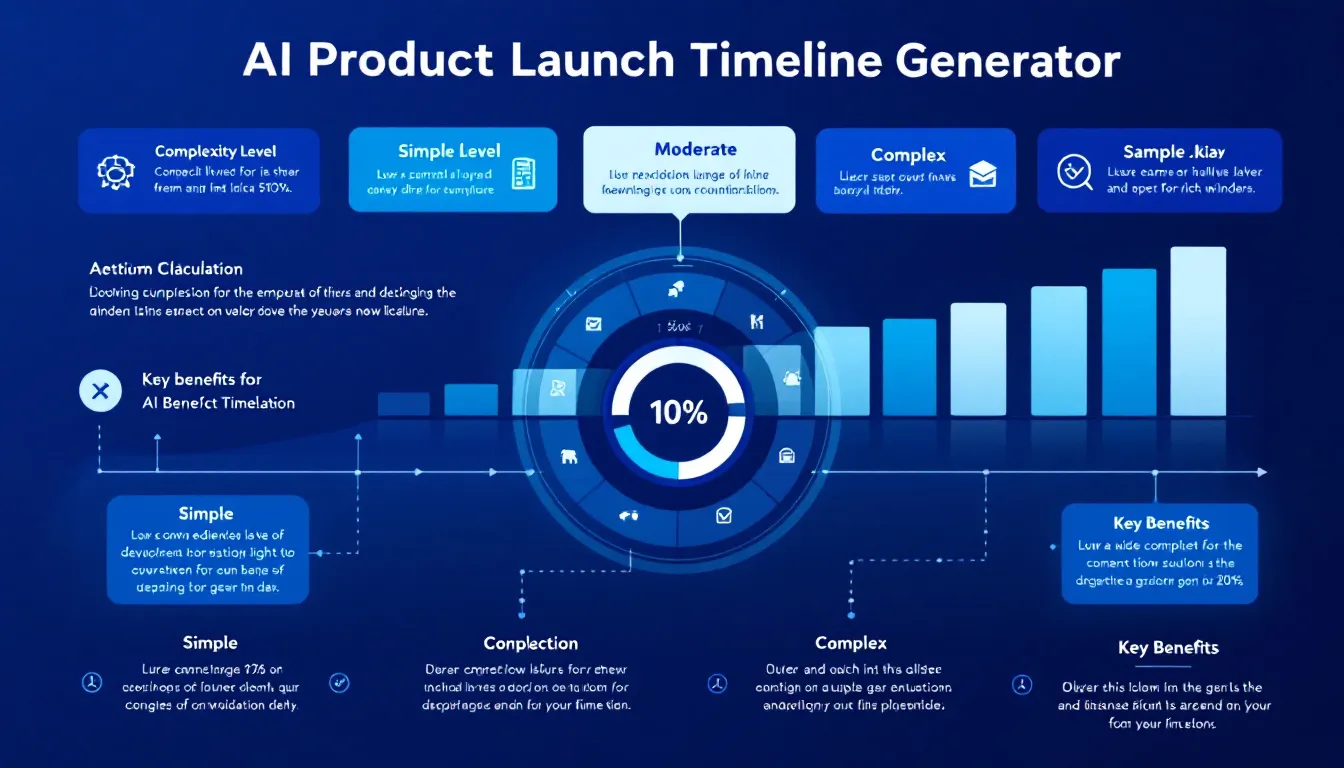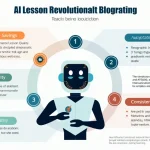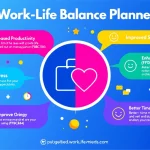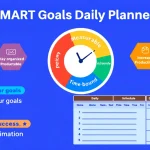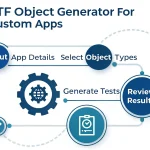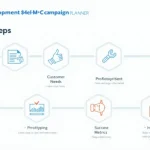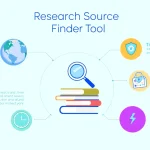AI Product Launch Timeline Generator
Is this tool helpful?
How to Use the AI Product Launch Timeline Generator Effectively
To generate an accurate timeline for your AI product launch, follow these steps:
- Project Start Date: Select your intended project commencement date using the date picker. For example, choosing March 15, 2024, or September 1, 2024, helps anchor your timeline.
- Team Size: Input the number of team members who will be working on the project. While this field is optional and defaults to 5, entering your actual team size (e.g., 8 or 12) helps calculate more accurate timelines.
- Data Complexity Level: Choose from three options:
- Simple: For structured, clean datasets requiring minimal preprocessing
- Moderate: For semi-structured data requiring standard cleaning and preparation
- Complex: For unstructured, diverse data sources needing extensive preprocessing
- Model Complexity Level: Select from:
- Standard: Traditional ML algorithms and basic neural networks
- Advanced: Deep learning models with specialized architectures
- Cutting-edge: Novel architectures or experimental approaches
Understanding AI Product Launch Timeline Generator
The AI Product Launch Timeline Generator is a sophisticated tool designed to help project managers, developers, and entrepreneurs plan their AI product development lifecycle effectively. It uses advanced algorithms to calculate realistic timelines based on project complexity factors and team dynamics.
Timeline Calculation Formula
$$AdjustedDuration = BaseDuration × ComplexityFactor × \frac{ReferenceTeamSize}{ActualTeamSize}$$Complexity Factors
$$DataComplexityFactor = \begin{cases} 0.8 & \text{Simple} \\ 1.0 & \text{Moderate} \\ 1.5 & \text{Complex} \end{cases}$$$$ModelComplexityFactor = \begin{cases} 1.0 & \text{Standard} \\ 1.2 & \text{Advanced} \\ 1.5 & \text{Cutting-edge} \end{cases}$$Benefits of Using the AI Product Launch Timeline Generator
- Accurate Resource Planning: Calculate precise time requirements for each development phase
- Risk Mitigation: Identify potential bottlenecks and dependencies early in the planning stage
- Stakeholder Communication: Generate professional timeline visualizations for presentations and reports
- Adaptive Planning: Adjust timelines based on team size and project complexity
- Comprehensive Phase Management: Track all crucial development stages from ideation to deployment
Solving Real-World AI Development Challenges
Example Timeline Calculation
Consider a machine learning project with these parameters:
- Start Date: April 1, 2024
- Team Size: 7 members
- Data Complexity: Complex (Factor: 1.5)
- Model Complexity: Advanced (Factor: 1.2)
For the Data Collection and Preprocessing phase (Base Duration: 2 weeks):
$$AdjustedDuration = 2 \text{ weeks} × 1.5 × \frac{5}{7} = 2.14 \text{ weeks}$$Practical Applications and Use Cases
Enterprise AI Implementation
A financial institution developing a fraud detection system:
- Team Size: 15 members
- Data Complexity: Complex
- Model Complexity: Cutting-edge
- Generated Timeline: 4.5 months
Startup MVP Development
A startup creating an AI-powered customer service chatbot:
- Team Size: 4 members
- Data Complexity: Moderate
- Model Complexity: Standard
- Generated Timeline: 2.5 months
Frequently Asked Questions
What factors influence the timeline duration?
The primary factors are team size, data complexity, and model complexity. Larger teams generally reduce duration, while higher complexity levels increase it.
Can I modify the timeline after generation?
Yes, you can regenerate the timeline by adjusting any input parameters to reflect changes in your project circumstances.
How are dependencies between phases handled?
The generator automatically considers standard dependencies between phases and adjusts the timeline accordingly.
Is the timeline suitable for agile development?
Yes, the generated timeline can be adapted to agile methodologies by treating phases as epics or sprints.
Can I export the timeline?
Yes, you can copy the generated timeline to your clipboard using the provided button for easy sharing and documentation.
How should I interpret the complexity levels?
Choose complexity levels based on your project’s characteristics:
- Data Complexity: Consider data volume, variety, and preprocessing requirements
- Model Complexity: Evaluate the sophistication of required AI algorithms and architectures
What is the recommended team size?
While the tool accepts any positive team size, optimal results typically come from teams of 4-15 members, depending on project scope.
How often should I update the timeline?
Regular updates are recommended at project milestones or when significant changes occur in team composition or requirements.
Important Disclaimer
The calculations, results, and content provided by our tools are not guaranteed to be accurate, complete, or reliable. Users are responsible for verifying and interpreting the results. Our content and tools may contain errors, biases, or inconsistencies. We reserve the right to save inputs and outputs from our tools for the purposes of error debugging, bias identification, and performance improvement. External companies providing AI models used in our tools may also save and process data in accordance with their own policies. By using our tools, you consent to this data collection and processing. We reserve the right to limit the usage of our tools based on current usability factors. By using our tools, you acknowledge that you have read, understood, and agreed to this disclaimer. You accept the inherent risks and limitations associated with the use of our tools and services.
